Art Activity Video: Suminagashi
Discover paper dyeing art inspired by Japanese paper marbling and folding!
Activity best for children age 3 and up
Suminagashi means “floating ink” in Japanese. It is believed this art began in the 12th century when sumi ink was accidentally spilled into water by a member of the Japanese Imperial Court. The oil based ink floated and when paper was placed on top, a beautiful pattern appeared resembling stone patterns or tree rings. This beautiful paper and fabric dyeing art spread throughout Asia to Persia (now Iran) and Western Europe.
Shibori came to Japan by way of China, not through the royal court but by ordinary people wanting to be as fashionable as they could. It was against the law for their coats, “Kimonos”, to be of silk or other expensive fabrics set aside for the emperor and his court. However, everyone had access to indigo and other colorful dyes. They found ways of folding, tying and pressing cloth to make wonderful patterns in the most humble of fabric and paper. Our modern “tie-dye” had it’s beginning in Kanoko Shibori.
Today, we’ll make patterned paper inspired by Japanese imperial Suminagashi and humble Kanoko Shibori!
Materials you’ll need:
White copier paper, paper towels, cardboard, white coffee filters
Food coloring
Cookie pans, shallow disposable food trays, or aluminum pizza trays
Toothpicks, forks, pipe cleaners, or the back of a thin paintbrush
Small cups or muffin tins
Water
Shaving cream
Spatulas
A ruler longer than your tray is wide
A counter or table near a sink
Directions for Suminagashi
STEP 1
Squirt your shaving cream onto a shallow tray ( ¼” or so is best) and level it with a ruler or a piece of cut cardboard longer than your tray is wide.
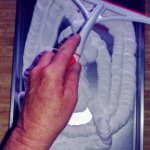
STEP 2
Drop dots of food coloring onto the surface of shaving cream. Use colors that will mix well together. Warm colors like yellow, red, orange, pinks and cool colors like blue, purple, and greens mix well together. Try to just use two or three colors to start. Leave areas of white shaving cream between your dots!
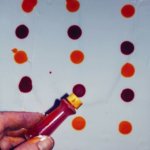
STEP 3
Drag a toothpick, pipe cleaner, fork or the back of a thin paintbrush through the shaving cream. Drag just at the surface lightly! Try not to over mix!
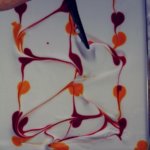
STEP 4
Press paper or cardboard onto shaving cream and tap lightly, wait for a few seconds and pull off.
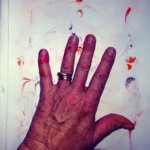
STEP 5
Scrape off the shaving cream and you have a monoprint suminagashi. You can repeat Step 4, if you like, until you have your paper covered to your satisfaction!
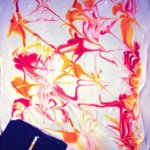
Directions for Kanoko Shibori
STEP 1
Use shallow cups or muffin tins to pour out one tablespoon of water into each cup. Put four or more drops of food coloring into each dish. The more drops you add, the darker your color will be. Be careful, dye can stain clothes!

STEP 2
Fold your paper, paper towel or coffee filter three or four times. Then dip a corner into the food dye. When you see the color wick up into the paper, turn and dip again. Different papers absorb dye differently! Experiment, but don’t overdo the process.
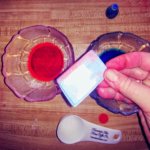
STEP 3
Unfold your wet paper carefully. Look at all the different patterns I got using paper coffee filters, copier paper and paper towels. How are they different and how are they the same? Now you can use them in card making, journal covers, or hang them up to admire!
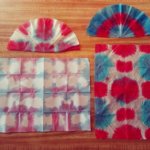
Tips for Parents:
Do this activity outside on a hot afternoon! Have your little artist wear a bathing suit and hook up the hose. (It’s ok to get a little messy!) This art activity helps children explore color mixing, and mixed media experimentation. Use your child’s finished design to make a composition book cover for back to school, a card for a teacher, or something special to hang up at home!
Here is how I used my Suminagashi and Kanoko Shibori!
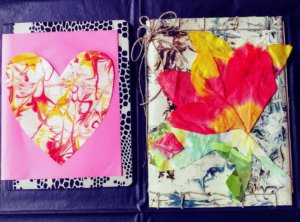
Share your art with us on Instagram by tagging @sdcdm320!
Questions about this activity? Email education@sdcdm.org

